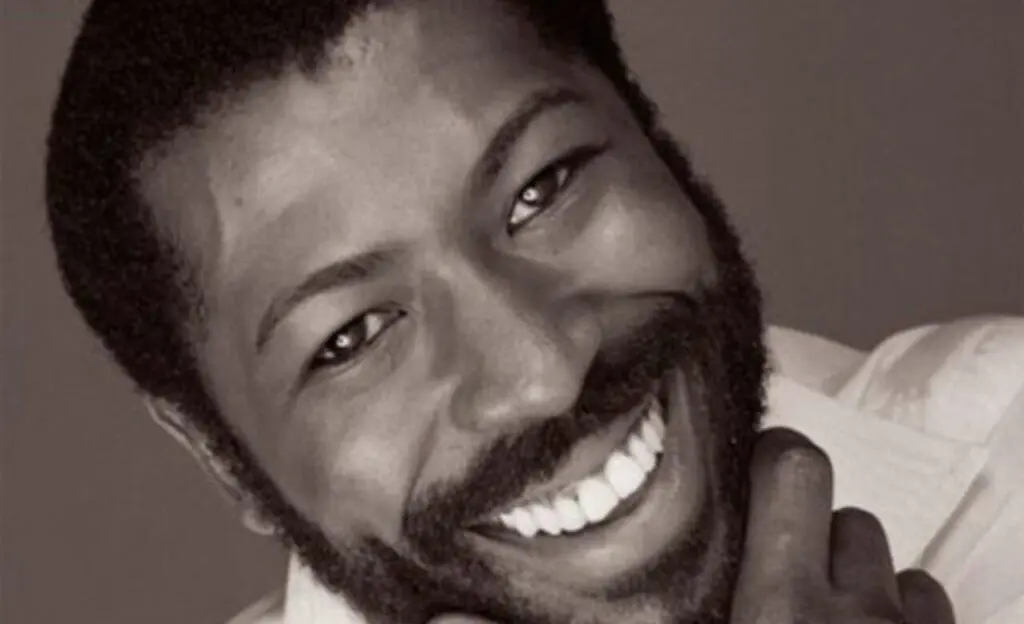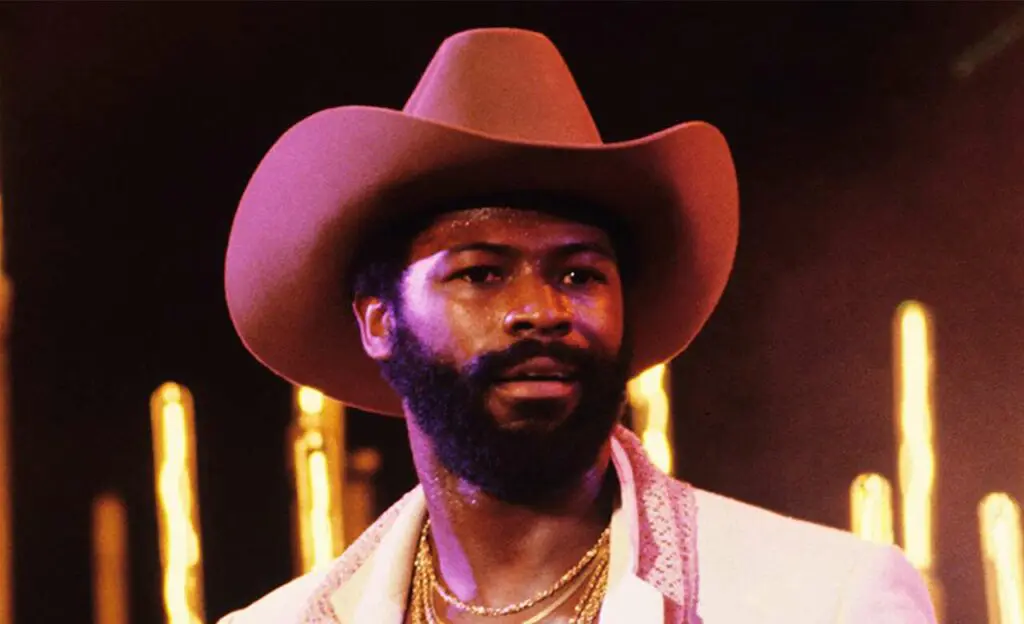Singer-songwriter Teddy Pendergrass was one of the giants of American soul and R&B. He rose to prominence as a soul pop singer in the 1970s and 1980s. Pendergrass's mind-blowing fame and fortune is based on his provocative stage performances and the intimate relationship he forged with his audience. Fans often swooned or threw their underwear onto the stage in response to his earthy baritone and overt sexuality.
One "fan" even shot another in a fight for a scarf with which the singer wiped his face. Many of the star's hits were written by the team of writers and producers Kenny Gamble and Leon Huff. The latter recalled the singer's solo debut in a Los Angeles nightclub as "the coming of a superstar". He combined a down to earth, sexy urgency with soft and dark vocals that gradually filled with wilder, improvised and theatrical outbursts.

Teddy Pendergrass was at the height of his popularity when a car accident left him paralyzed. He couldn't eat or dress, let alone perform charismatic stage moves.
However, he could still sing and released a comeback album two years after the accident. His fans remained devoted. Many critics have said that Pendergrass' tragedy gave his music new depth.
Childhood and youth
He was born in Philadelphia, which became the center of soul music in the 1970s. After his father left the family (he was killed in 1962), the boy was raised by his mother Ida. It was she who noticed her son's love for music and singing. Pendergrass began singing in church as a child.
He often accompanied his mother to work at the Sciolla Dinner Club in Philadelphia (she worked there as a cook). There he watched Bobby Darin and popular singers of the time. Studying in the church choir, the boy thought about becoming a priest in the future. But childhood dreams are in the past.
Pendergrass got his musical calling when he saw soul singer Jackie Wilson perform at the Uptown Theatre. With a scandal, the guy left the school of Thomas Edison in the 11th grade to seriously engage in the music business.
Impeccably feeling the rhythm, he first studied music as a drummer with a teenage band Cadillacs. In 1968, he joined Little Royal and The Swingmasters, who auditioned at the club where Pendergrass worked as a waiter. Quickly becoming famous for his ability to play any rhythm, the following year he took a job as drummer for Harold Melvin (the last member of the local 1950s band the Blue Notes).
Teddy Pendergrass: The Beginning of a Creative Journey
Teddy Pendergrass started his career in 1968 not as a singer, but as a drummer for Harold Melvin and the Blue Notes. But later the guy began to replace the soloist, in two years he became the main vocalist. And his personal sound began to define the band. In the Encyclopedia of Rock, Dave Hardy and Phil Laing described Pendergrass' singing on such Blue Notes hits as "The Love I Lost", "I Miss You" and "If You Don't Know Me" as a gritty mix of gospel and blues screamer styles. . Their intense speech included bravado and impassioned plea.
In 1977, Pendergrass left the Blue Notes to pursue a solo career. In many ways, the novice singer was helped by his charisma and bright appearance. In addition, women liked him more on stage as a soloist, and not as a drummer. They gathered en masse for the special midnight shows For Women Only. To hear Pendergrass sing Close the Door, Turn off the Lights and more. As a solo artist, Pendergrass expanded his horizons to reach new listeners.
A Stereo Review writer noted that while he still hummed frightened love pleas with a raw manliness that makes many women shudder, he also learned to sing softly. Thus, achieving popularity among those who love sweetness. So it is with those who prefer rigidity. Almost all of his albums have gone platinum.
And Pendergrass was recognized as the main black sex symbol of the late 1970s. As a solo artist, Pendergrass became the first black singer to record five consecutive multi-platinum albums: Teddy Pendergrass (1977), Life Is a Song Worthing Sing (1978), Teddy (1979), Live! Coast to Coast (1980) and TP (1980), his first five releases, as well as Grammy nominations and sold-out tours.
Teddy Pendergrass: Accident
The situation changed dramatically on March 18, 1982. As Pendergrass was driving his Rolls-Royce through the Germantown section of Philadelphia, the car suddenly crashed into a tree. As the singer later recalled, after the blow, he opened his eyes and was still there. “I was conscious for a while. I know I broke my neck. It was obvious.
I tried to make a move and couldn’t,” he said. Pendergrass was right in thinking he had a broken neck. His spinal cord was also shattered, and bone fragments severed some of his vital nerves. Movement was limited to the head, shoulders and biceps. When the extent of the damage became apparent and doctors told the artist that his paralysis was likely to be permanent, Pendergrass wept until he had a nervous breakdown. He was also told that similar injuries to him affect the respiratory muscles.
As a result - the ability to sing. A few days after the accident, Pendergrass carefully tested his voice by singing along with a coffee commercial on television. “I could sing,” he recalled, “and I knew that whatever I needed to do, I could.”
Rumors and fight for image
Pendergrass' first task was to get rid of the rumors surrounding his misfortune. He was a suspended driver. And it quickly spread in the tabloids that he was drunk or under the influence of drugs when it happened. After investigating the incident, the Philadelphia police announced that they had found no evidence of substance abuse.
Although she suggested that it was about reckless driving and excessive speed. It was then revealed that Tenika Watson (Pendergrass passenger), who was not seriously injured in the accident, was a transgender artist. The former John F. Watson has confessed to 37 arrests for prostitution and related crimes over a ten-year period. The news was potentially very damaging to Pendergrass' image as a macho man. But his fans quickly accepted his claim that he simply offered a ride to a random acquaintance and knew nothing about Watson's profession or history.

After being released from the hospital, Pendergrass faced a difficult period of adjusting to his new limitations. From the very beginning, he was sure that a physical handicap would not stop his career. “I excel at whatever challenge I face,” he told Charles L. Sanders at Ebony. “My philosophy has always been, ‘Bring me a brick wall. And if I can't jump over it, I'll go through it."
After several months of exhausting special therapy. Including exercises with a heavy load on the abdomen to build up a weakened diaphragm, Pendergrass, making every conceivable and unimaginable effort, recorded the album "Love Language".

Platinum Album
It became his sixth platinum album, confirming both his musical ability and dedication to his fans. Another stage in the singer's recovery occurred at the Live Aid concert in 1985. When he performed on stage in a wheelchair for the first time since the accident. Performing Reach Out and Touch with Ashford and Simpson. Then in an interview he said: “I experienced a living hell, all kinds of anxieties and had great fears about everything.
At first I did not know how people would accept me, and I did not want anyone to see me. I wanted to do something with myself. I didn't want to live with these thoughts. But… I had a choice. I could refuse it and stop absolutely everything or I could continue. I decided to continue."
Revival and new successes of Teddy Pendergrass
Even while in a wheelchair, Teddy was very popular with women. He married Karen Still in 1987. She later recalled that her future husband sent her a red rose for 12 consecutive days before proposing.
He had a role in the musical Your Arms Too Short to Box With God in 1996 and returned to solo performances. Meanwhile, Don't Leave Me This Way became a hit in two different decades for Thelma Houston (1977) and The Kommunards (1986). His solo songs have been sampled by a new generation of R&B artists from D'Angelo to Mobb Deep.
In later life, he devoted considerable time to the Teddy Pendergrass alliance. It was created in 1998 to help victims of spinal cord injuries. Teddy and Karen divorced in 2002. And he remarried for the second time in 2008. His life was also the subject of the theatrical play I Am Who I Am. And in 1991, Truly Blessed's autobiography was published.
In concert in 2007, marking the 25th anniversary of the accident. Pendergrass paid tribute to the "unsung heroes" who dedicated themselves to his well-being, stating, "Instead of being saddened by this period, I am deeply overwhelmed with gratitude."
In 2009, Pendergrass underwent surgery for colon cancer. But, unfortunately, it did not give a positive result. The singer died on January 13, 2010. He is survived by his mother Ida, wife Joan, a son, two daughters and nine grandchildren.



